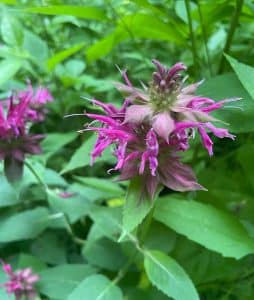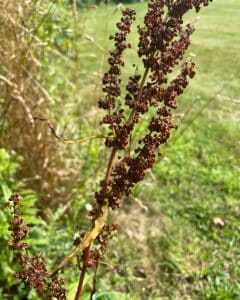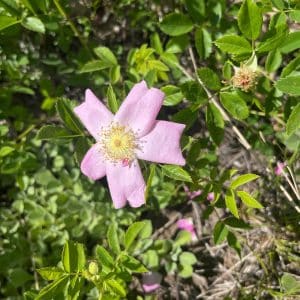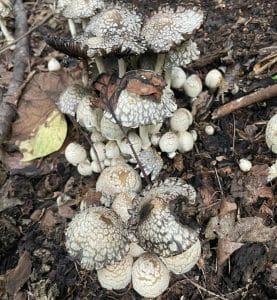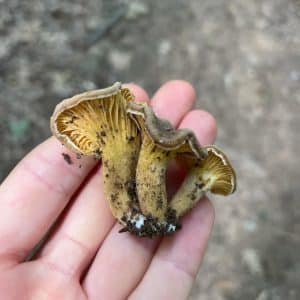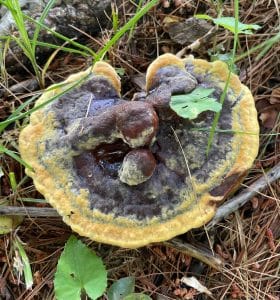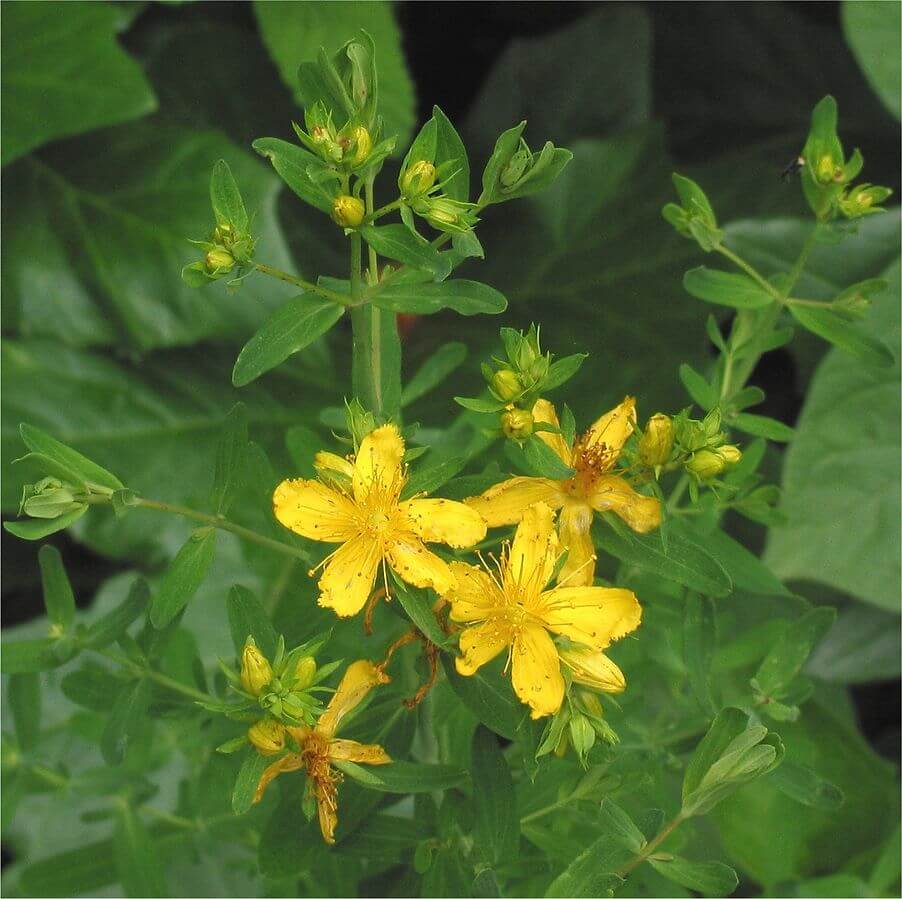
(Photo by: Rasbak/Wikimedia Commons)
St. John’s wort (Hypericum perforatum) is a flowering perennial plant that’s native to Europe. This plant can be distinguished by its yellow, star-shaped flowers which were said to first appear on St. John the Baptist’s birthday. For centuries, this plant has been used as a herbal remedy, mainly for skin problems, depression, and other mental disorders.
Edibility and culinary use
St. John’s wort has a unique astringent and bittersweet taste. The leaves, flowers, and seeds of this plant are most commonly brewed to make tea. This herbal tea’s strong flavor that’s quite pleasant, but can take some people a while to get used to. Sugar, honey, or lemon juice are often added into this concoction to make it more palatable. Fresh St. John’s wort leaves can be tossed into salads. The fresh flowers can also be used as a beautiful edible garnish in salads.
Health benefits
Studies reported that St. John’s wort has shown antidepressant, antibacterial, antiviral, analgesic, expectorant, and sedative effects. Drinking St. John’s wort tea help relieve stress, anxiety, and mild depression. Insomniacs will also find that drinking this tea will help them sleep better. Much like other herbal teas, this tea can aid soothe sore throats, cough, congestion. upset stomachs, and menstrual cramps.
St. John’s wort can also be used externally to help skin problems. St. John’s wort tea or tincture is a popular remedy for burns, sunburns, wounds, bruises, sores, insect bites, and cramps. Alternatively, an infusion in olive oil can also be used. This plant also promotes skin health and beauty by hydrating skin cells, restoring the skin’s natural color and tone, and reducing wrinkles.
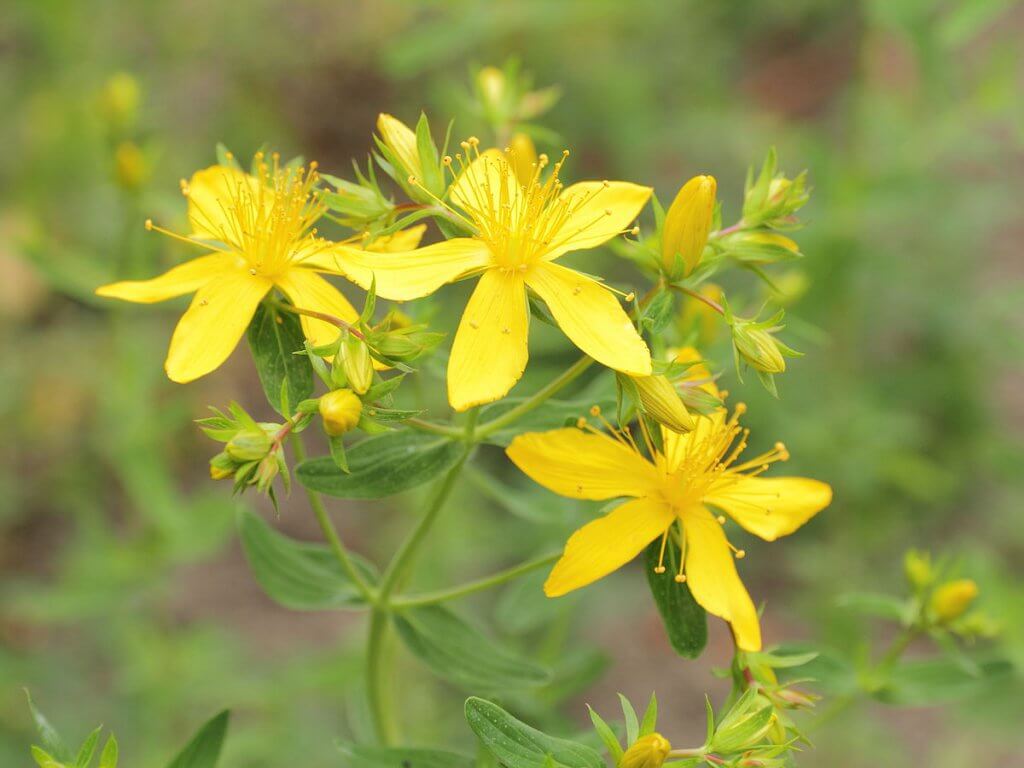
(Photo by: C T Johansson/Wikimedia Commons)
Cultivation
With its bright and bubbly yellow blooms, St. John’s wort can be a cheerful addition to any garden. If you’re interested in cultivating this plant, you’re in luck because St. John’s wort is an easy plant to grow. Just make sure that it’s out of reach for animals as it may cause complications or even death when eaten by animals.
St. John’s wort is not fussy about what soil type it grows on, but it prefers well-drained, sandy soil. Like other herbs, it loves the sun but can tolerate partial shade as well. Water the plant only when the soil is almost completely dry. Keep the soil moist but not soggy. For optimum health and growth, fertilize this plant once every one or two weeks with a water-soluble fertilizer.
Start the seeds indoors around 8 weeks before the last frost date. They should germinate within 14 to 28 days. Once the young seedlings are around 3” tall, transfer them outside to their permanent location in late spring or summer. Give around 1’ or 2’ space between each plant to avoid overcrowding.
The leaves can be harvested after the plant has settled and there are enough leaves to sustain it. Meanwhile, the flowers can be picked as soon as they appear. Make sure to wear gloves while handling St. John’s wort to avoid contact with the plant’s sap.
Cautions
St. John’s wort contains a toxic compound called hypericin. But, it’s generally safe to be ingested in small doses for up to 12 weeks. Consuming large doses over an extended period of time can cause fatigue, irritability, trouble sleeping, vivid dreams, nervousness, irritability, upset stomach, headache, skin rash, diarrhea, photosensitivity, and skin tingling. Skin contact with the sap can cause allergic reactions, rashes, and dermatitis.
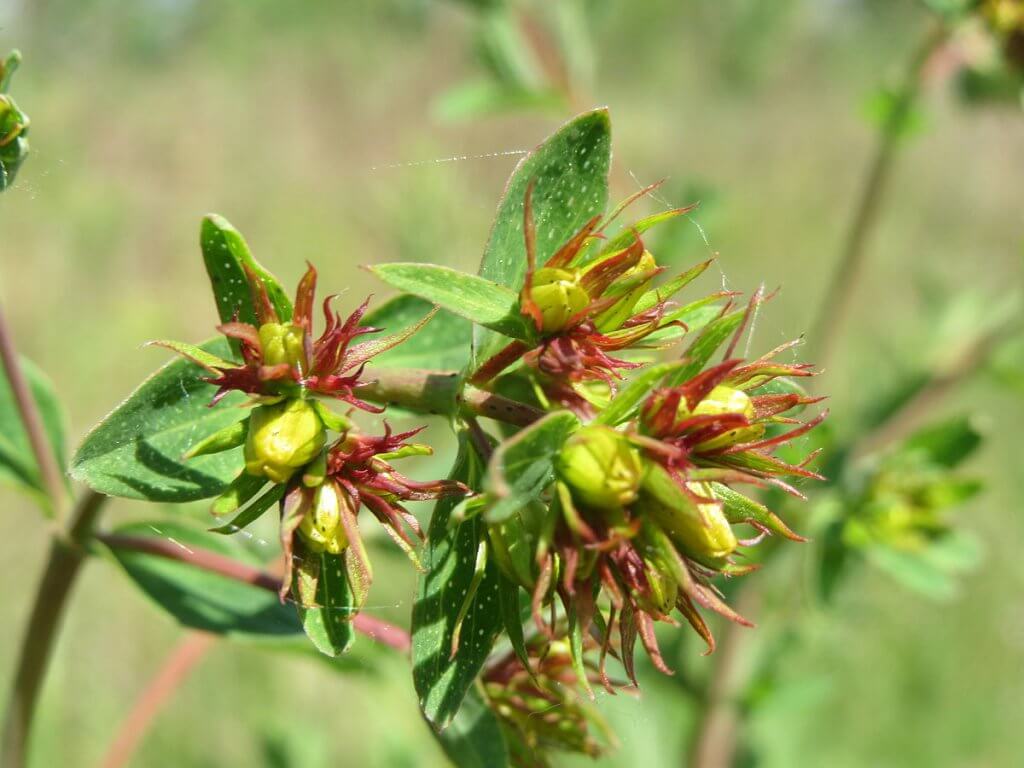
(Photo by: AnRo0002/Wikimedia Commons)
Due to its toxicity, people on medications as well as pregnant and breastfeeding women must consult their doctors before consuming St. John’s wort. This plant can reduce the effectiveness of some medications, including HIV medications, antidepressants, birth control pills, and anesthetics. It may also cause birth defects and miscarriage as well as cause drowsiness and colic in nursing infants.
Conclusion
Despite its toxicity, St. John’s wort remains a useful herbal remedy. Taking St. John’s wort as a useful natural supplement alongside other medications and treatments may help alleviate symptoms of skin problems, nervous problems, mental disorders, and many more conditions. Just remember to consult a doctor before consumption.
---------------
Writen by Cornelia Tjandra
Cornelia is a freelance writer with a passion for bringing words to life and sharing useful information with the world. Her educational background in natural science and social issues has given her a broad base to approach various topics with ease. Learn more about her writing services on Upwork.com or contact her directly by email at cornelia.tjandra@gmail.com
Many of our readers find that subscribing to Eat The Planet is the best way to make sure they don't miss any of our valuable information about wild edibles.
See our privacy policy for more information about ads on this site

